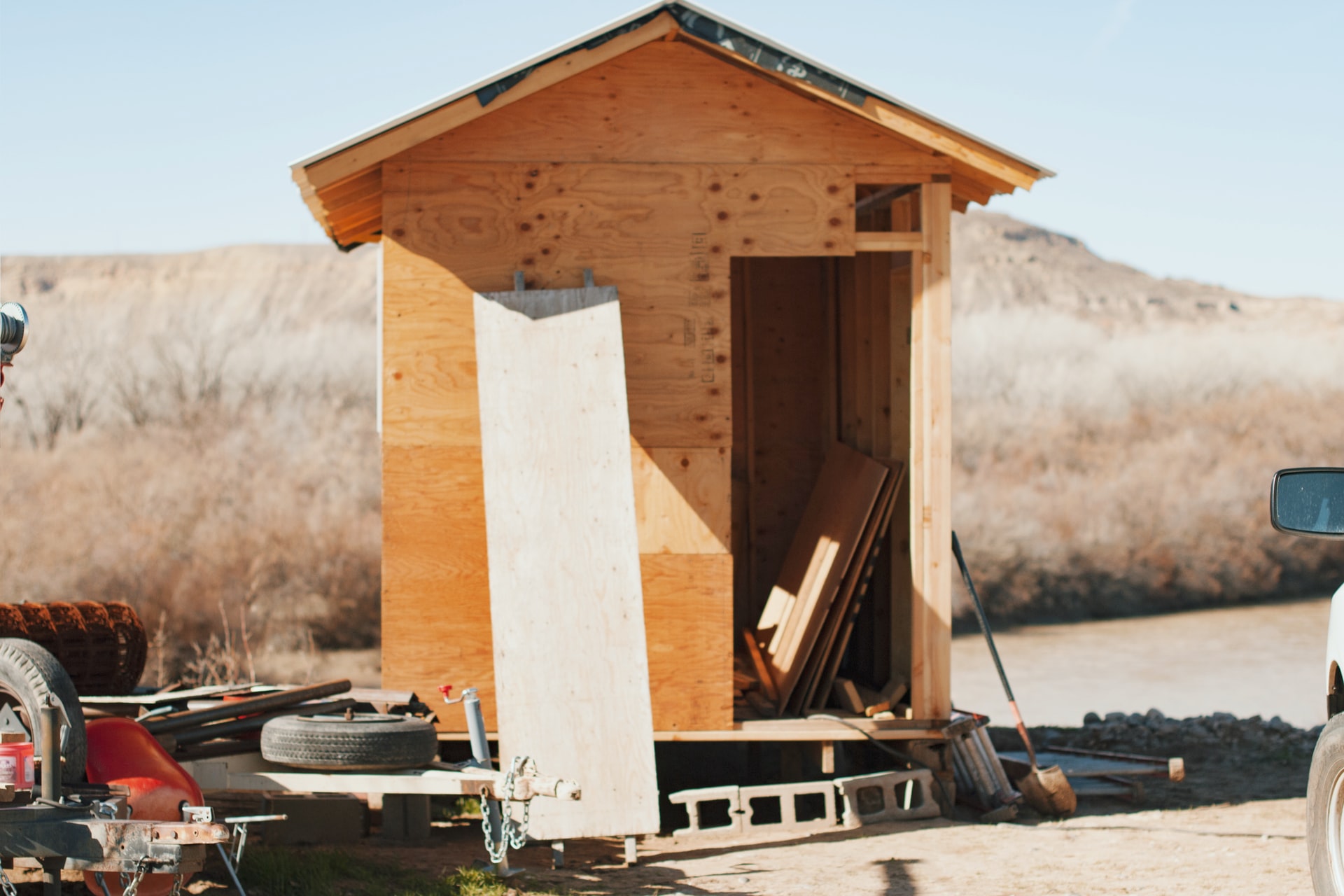With the increasing popularity of minimalism and affordable lifestyles, people are more into the idea of living in tiny houses. The diversity of the whole concept of a tiny house is fascinating.
The level of creativity that’s always shown in building and designing these houses blows my mind. Some are building their tiny houses by themselves. Others are turning buses and garages into livable houses. Even sheds now are used as a form of tiny houses.
Sheds are originally for storage, but the reality now is different. Sheds are being built in different shapes and sizes and are turned into beautiful, habitable houses.
Is it legal to live in a shed, though? Knowing the answer to this question is crucial before taking any steps towards building your own habitable shed.
Is Living in a Shed Legal?
The answer to this question varies from one place to another, as building codes and zoning laws are very localized. They’re regulated at a city or county level. So, you need to check the laws in your city before taking any steps.
Why Are People Transitioning Into Living in Sheds?
Living in a shed or a tiny house, in general, has a lot of pros; financial ones, especially.
Sheds are much cheaper than conventional houses. This makes them the best option for college students and those trying to save money.
You can also live in a shed if you just bought a piece of land and are waiting for your house to be finished. Another idea is to build the shed for guests.
The only notable con of living in a shed is the space. It‘s not a problem for most people, though, as the whole idea behind living in a shed revolves around being creative with storage ideas and design so that you’re able to take advantage of every inch of space.
It’s only an issue when you’re trying to accommodate a lot of people or things in your tiny shed. So, if you intend on living in a shed, be prepared to limit the number of people you invite over as well as the number of personal belongings.
You don’t have to be saving money to live in a shed. You could simply be fond of the whole idea of minimalistic living inside a tiny house.
Why Living in a Shed Can Be Illegal?
The reason why living in a shed can be illegal is that it may simply not meet relevant building codes. Sheds are classified as an accessory building. They’re meant to be used for storage or even as workshops, not as dwelling places.
The sheds that you purchase from stores like Home Depot typically don’t comply with building, zoning, and health codes. The purpose of these codes is to ensure that you’re living in a place that’s safe for you.
So, some modifications may be needed to make a shed habitable. In this case, living in a shed won’t be a problem.
What Makes Living in Sheds Legal?
There are two necessary steps for you to turn your shed into a tiny habitable space. The first step is to get a permit before starting the building process. The second step is meeting basic building standards. Let’s go over each step briefly.
Getting a Permit
As mentioned above, there are some common zoning regulations that dictate the building of sheds and acquiring a permit. These regulations are based upon several factors, including:
- The size and height of the shed
- The purpose of building the shed
- The area where it’s going to be placed
- The electricity and climate
- The foundation of the shed
These factors must be taken into consideration when formulating your shed’s building plan because that very plan will be used to fill out a permit application.
Your permit application might be approved immediately, or it might take up to a week.
Is It Important to Have a Permit?
Some counties in the US have minimal regulations regarding building sheds and living in them. But in the vast majority of cities and towns, things are much more regulated to ensure that your dwelling place meets all structural and safety standards.
Not securing a permit and your city’s breaking building and zoning codes can put you in trouble. Local inspectors are more than likely to visit your shed and examine it to ensure it’s up to code. Note that local inspectors don’t need a warrant or permission to examine sheds.
If you don’t have a permit for your shed, the least that can happen is you having to give up your shed. The worst that can happen is you facing legal charges.
Meeting the Safety Standards
After getting the permit, you need to consider how you’ll get the shed to meet basic building standards.
Your least goal here is to build your shed as close to a single-family home as possible. Your shed should have the following components:
- Foundational design that meets building and zoning codes
- Sanitary facilities that are connected to sewerage
- Connection to a clean source of water
- Installed fire alarms
- A space for cooking facilities and a sink
- Climate control systems: heating or cooling
- Durable flooring
To Wrap It Up
If you’re considering turning your shed into a house or even building one by yourself, you need to plan and prepare well for such a step.
The most important step is to check with your local authorities about relevant regulations. Then, you need to get your paperwork in order. Lastly, you need to follow basic building requirements to ensure your safety, first and foremost, and your compliance with your city/town’s regulations.
You can unleash your creativity by sketching your own shed design and building it yourself, or you can invest in a pre-built shed if you don’t have time to build one yourself.

